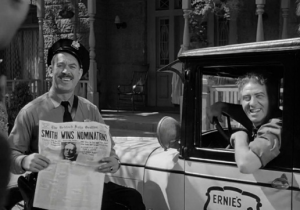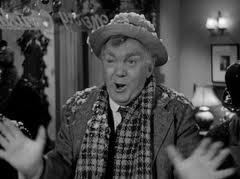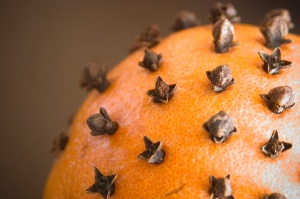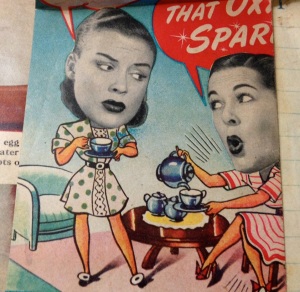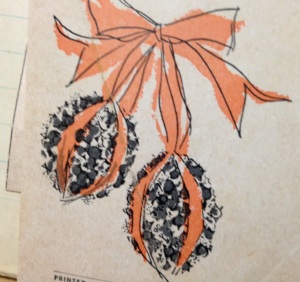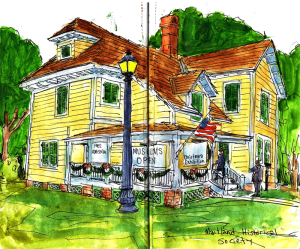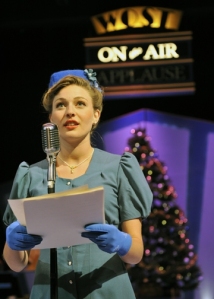
Piper Rae Patterson as radio actress Sally Applewhite in the Orlando Shakespeare Theater’s “It’s a Wonderful Life: A Live Radio Play.” (BroadwayWorld.com)
I haven’t watched the 1946 movie “It’s a Wonderful Life” for years. There’s a lot to do around the holidays and it’s more than two hours long – and, besides, the part where befuddled Uncle Billy (Thomas Mitchell) makes a big mistake and the frantic George Bailey calls him “a silly stupid old man” – that part always makes me sad.
Like Uncle Billy, I tend to lose things.
So I’m grateful to the Orlando Shakespeare Theater, and its production of “It’s a Wonderful Life: A Live Radio Play,” for reminding me of the essence of this story – of how one hard-working man, George Bailey, gets to see how life would have been different without him in Bedford Falls.
In this 1940s “radio play,” five skilled actors portray more than 40 different characters and bring us the essence of the story and of the time, just after World War II. The actress Suzanne O’Donnell, for example, gives voice to characters ranging from Violet, the bad girl of Bedford Falls, to Bailey’s little daughter Zuzu and to his mother, Ma Bailey, played in the movie by Beulah Bondi.
This “radio play” helped me see the story with fresh eyes and remember the characters, from mean Mr. Potter to the original Bert and Ernie, who serenade George and Mary Bailey on their wedding night with the old song “I love you truly.”
Capra-corn? My “sophisticated” younger self probably thought so. But there’s so much to this piece of true Americana and the history of our reactions to it. As the good Wikipedia article on the movie notes, a 1947 FBI memo even suggested that Capra represented “Communist” values and the movie “deliberately maligned the upper class” by “attempting to show the people who had money were mean and despicable characters.”
Maybe this kind of popular movie is as close to a shared secular mythology as we Americans have – that is, a meaningful story in which audience members of varied ages know the characters and many lines and can experience meaning by watching or hearing it together.
We may know the outcome, but the story still moves us, brings its lessons home, including the thought that “no man is a failure who has friends.” And that includes Uncle Billy, too.
For more on the Orlando Shakespeare Theater, visit http://www.OrlandoShakes.org
